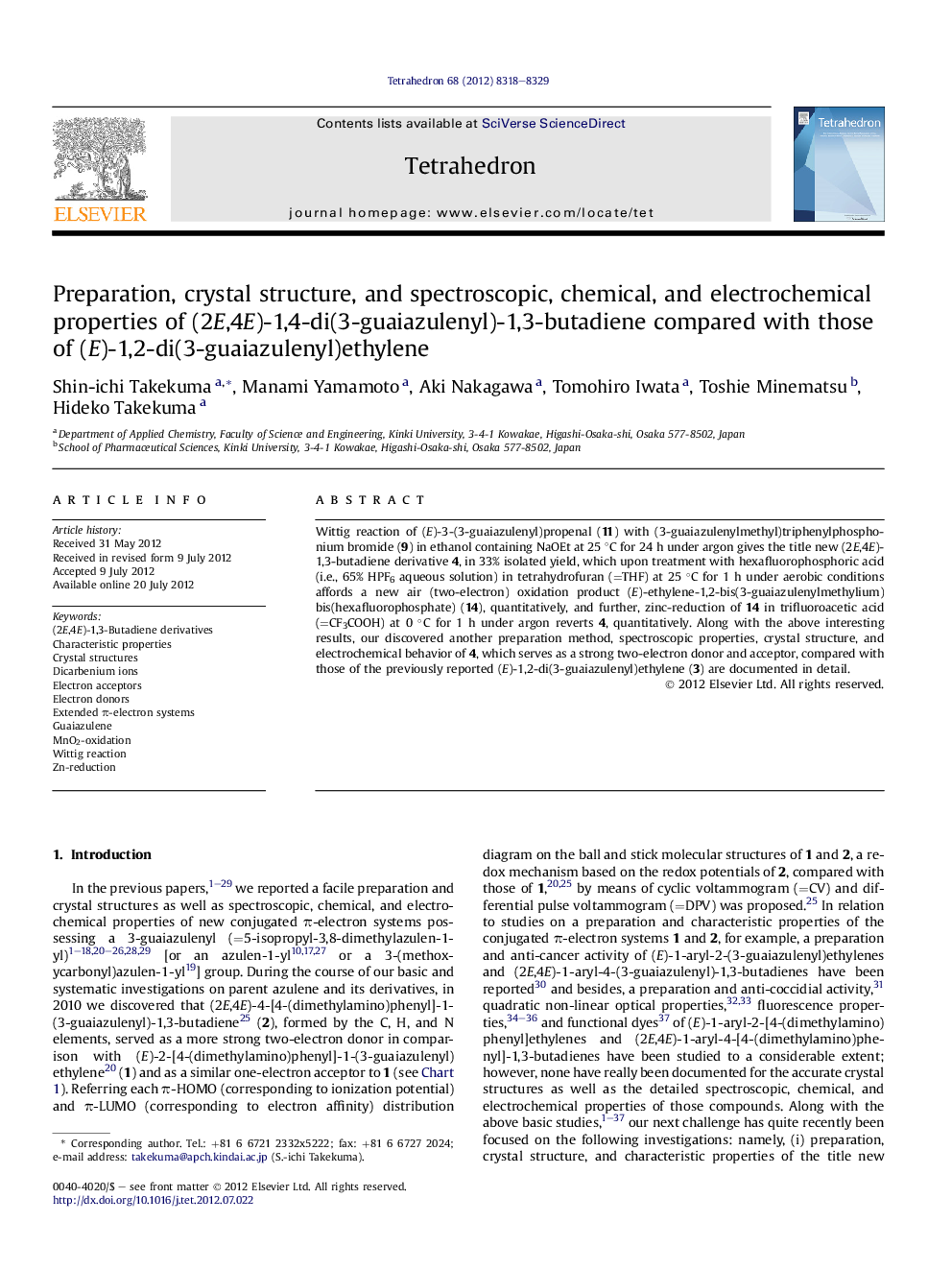| کد مقاله | کد نشریه | سال انتشار | مقاله انگلیسی | نسخه تمام متن |
|---|---|---|---|---|
| 5219843 | 1383369 | 2012 | 12 صفحه PDF | دانلود رایگان |

Wittig reaction of (E)-3-(3-guaiazulenyl)propenal (11) with (3-guaiazulenylmethyl)triphenylphosphonium bromide (9) in ethanol containing NaOEt at 25 °C for 24 h under argon gives the title new (2E,4E)-1,3-butadiene derivative 4, in 33% isolated yield, which upon treatment with hexafluorophosphoric acid (i.e., 65% HPF6 aqueous solution) in tetrahydrofuran (=THF) at 25 °C for 1 h under aerobic conditions affords a new air (two-electron) oxidation product (E)-ethylene-1,2-bis(3-guaiazulenylmethylium) bis(hexafluorophosphate) (14), quantitatively, and further, zinc-reduction of 14 in trifluoroacetic acid (=CF3COOH) at 0 °C for 1 h under argon reverts 4, quantitatively. Along with the above interesting results, our discovered another preparation method, spectroscopic properties, crystal structure, and electrochemical behavior of 4, which serves as a strong two-electron donor and acceptor, compared with those of the previously reported (E)-1,2-di(3-guaiazulenyl)ethylene (3) are documented in detail.
The title new (2E,4E)-1,3-butadiene derivative 4 serves as a strong two-electron donor. Therefore, the π-electron system 4 is readily converted into a new air (two-electron) oxidation product 14, quantitatively, the reaction conditions, of which are shown in the following scheme. Furthermore, the Zn-reduction of 14 in CF3COOH at 0 °C for 1 h under argon reverts 4, quantitatively. The title unique studies, with several interesting properties of 4 and 14, are reported.Figure optionsDownload as PowerPoint slide
Journal: Tetrahedron - Volume 68, Issue 39, 30 September 2012, Pages 8318–8329